Heritage Sites in Odisha
Discover 15 magnificent heritage sites in odisha, spanning centuries of Indian heritage. Each site tells a unique story of India's rich cultural legacy, architectural evolution, and historical significance. From ancient temples to colonial buildings, explore meticulously documented heritage that showcases the diversity and grandeur of Indian civilization.
15 heritage sites with detailed documentation
Comprehensive architectural documentation
High-resolution photography
Average completion: 81% documented
Total Sites:15
UNESCO Sites:1
ASI Protected:6
Top Category:Temple (10)
Top Style:Kalinga Architecture + Temple + Pyramidal roof, intricate carvings (2)
Top Period:Eastern Ganga Period (13)
15
Total Sites
1
UNESCO Sites
6
ASI Protected
15
Featured
15 Sites Found

Featured
80% Documented
Barabati Fort, Cuttack (753001), Odisha, India, Odisha
The midday sun beat down on my back, the heat radiating off the laterite stones under my feet. Dust motes danced in the air, stirred by a languid breeze that offered little respite from the Odisha heat. I stood within the sprawling complex of Barabati Fort, in Cuttack, a world away from the sandstone grandeur of my native Rajasthan. Here, the story was told not in intricate carvings and towering gateways, but in the stark beauty of ruin and resilience. Barabati, meaning “twelve gates,” hints at its former glory. While the gates themselves are long gone, the massive earthen ramparts, though eroded by time and weather, still speak of a formidable stronghold. Unlike the precisely cut stones of Rajasthani fortifications, these walls are built of laterite blocks, a porous, reddish-brown rock, giving the fort a distinctly earthy, organic feel. I ran my hand over the rough surface, imagining the hands that had placed these stones centuries ago, during the reign of the Eastern Ganga dynasty. The fort’s moat, now dry and overgrown, once served as a crucial defense. I could picture it filled with water, reflecting the fort’s imposing walls, a deterrent to any would-be attacker. Walking along the ramparts, I traced the outline of what were once bastions and guard posts, now reduced to mounds of earth and rubble. The sheer scale of the fort, even in its ruined state, is impressive. It sprawls across a vast area, a silent testament to the power it once projected. Within the fort’s walls, the most striking feature is the excavated remains of a nine-storied palace. Only the foundations and a few scattered walls remain, but the layout suggests a structure of considerable size and complexity. I peered down into the exposed rooms, trying to imagine the life that once unfolded within these walls – the bustling courtiers, the elaborate rituals, the whispers of intrigue. The silence now is almost deafening. Adjacent to the palace ruins stands a small museum, housing a collection of sculptures and artifacts unearthed from the site. While the collection is modest, it offers a glimpse into the artistic and cultural heritage of the region. I was particularly drawn to a beautifully carved stone panel depicting a scene from Hindu mythology, its intricate details remarkably well-preserved despite the ravages of time. One of the most intriguing aspects of Barabati Fort is its layered history. The site has witnessed the rise and fall of multiple dynasties, each leaving its mark on the landscape. From the early Ganga rulers to the Mughals and Marathas, the fort has been a silent witness to centuries of conflict and change. This palimpsest of history adds a certain depth and complexity to the site, making it more than just a collection of ruins. As I walked towards the exit, the late afternoon sun casting long shadows across the fort’s grounds, I couldn’t help but feel a sense of melancholy. Barabati Fort is not a picture-perfect postcard destination. It is a place of quiet contemplation, a place where history whispers in the wind. It is a reminder of the impermanence of power and the enduring strength of the human spirit. While the grandeur of Rajasthan’s forts remains etched in my memory, the stark beauty of Barabati, with its whispers of forgotten empires, has carved its own unique place in my heart. The experience, though starkly different from the ornate forts I’m accustomed to, was a powerful reminder that history is written not just in marble and sandstone, but also in earth and dust.
Fort
Eastern Ganga Period

Featured
80% Documented
Bhanjpur, Mayurbhanj, Baripada (757001), Odisha, India, Odisha
The imposing red brick façade of the Baripada Palace, shimmering under the Odisha sun, immediately captured my attention. Having explored countless caves and temples across Maharashtra, I’ve developed a keen eye for architectural nuances, and this palace, a blend of classical and later architectural styles, promised a fascinating delve into Odisha's royal history. Located in the heart of Baripada, the former capital of the princely state of Mayurbhanj, the palace complex sprawls across a significant area, a testament to the power and influence the Bhanja dynasty once wielded. Stepping through the arched gateway felt like crossing a threshold into another era. The sprawling courtyard, now partially overgrown with grass, whispered stories of bustling activity, royal processions, and courtly intrigue. The main palace building, a two-storied structure with a prominent central bay, displays a distinct colonial influence. The arched windows, framed by intricate stucco work, and the decorative balustrades adorning the balconies spoke of a period when European architectural styles were being adopted and adapted by Indian royalty. I was particularly drawn to the intricate terracotta work that embellished sections of the palace walls. Unlike the stone carvings I’m accustomed to seeing in Maharashtra’s temples, this terracotta art added a unique textural dimension to the palace façade. The depictions of floral motifs, mythological figures, and scenes from daily life offered a glimpse into the artistic sensibilities of the time. The vibrant colours, though faded with age, still hinted at the grandeur that once characterized this royal residence. Inside, the palace is a labyrinth of interconnected rooms and corridors. While some sections are well-maintained, showcasing period furniture, portraits of the Bhanja rulers, and displays of royal artifacts, others bear the marks of time and neglect. Peeling paint, crumbling plaster, and dust-laden chandeliers evoke a sense of melancholy, a reminder of the transient nature of power and glory. I spent a considerable amount of time in the Durbar Hall, imagining the opulent gatherings and ceremonies that would have taken place within its walls. The high ceilings, ornate chandeliers, and remnants of intricate wall paintings hinted at the lavish lifestyle of the erstwhile rulers. One of the most captivating aspects of the Baripada Palace is its integration with the surrounding landscape. The palace gardens, though now somewhat overgrown, still retain a sense of tranquility. I wandered through the pathways, admiring the ancient trees and imagining the manicured lawns and vibrant flowerbeds that would have once graced this space. A small pond, located at the edge of the gardens, added to the serene atmosphere. My exploration extended beyond the main palace building to the surrounding structures, including the royal stables and the armory. The stables, though now empty, still bore the marks of their former occupants. The armory, housing a collection of weapons and armor, provided a fascinating insight into the military history of the region. The craftsmanship of the swords, shields, and other weaponry was truly remarkable. Leaving the Baripada Palace, I felt a sense of both awe and melancholy. Awe at the architectural splendor and historical significance of the site, and melancholy at the inevitable decay that time inflicts on even the grandest of structures. The palace stands as a poignant reminder of a bygone era, a testament to the rise and fall of dynasties, and a window into the rich cultural heritage of Odisha. It is a place that deserves to be cherished and preserved for future generations, offering a valuable glimpse into the lives and legacies of the Bhanja rulers.
Palace
British Colonial Period

Featured
85% Documented
Tankapani Road, Khordha, Bhubaneswar (751002), Odisha, India, Odisha
The rising sun cast long shadows across the sculpted walls of the Brahmeswara Temple, painting the warm, sandstone a deeper shade of gold. Standing before this magnificent structure in Bhubaneswar, I felt a palpable connection to the architectural prowess of the Somavamsi dynasty. As someone who has explored every UNESCO World Heritage site in India, I can confidently say that the Brahmeswara Temple holds a unique position, showcasing a distinct evolutionary stage in Kalinga architecture. The temple, dedicated to Lord Shiva, is relatively compact compared to some of the later behemoths of Odisha. Yet, this very compactness allows for an intimate experience. Every inch of the temple’s surface is a riot of intricate carvings. Unlike the later temples of Konark and Puri, where the sculptures often stand out in high relief, the carvings here are more closely integrated with the temple walls, creating a seamless tapestry of narrative and decorative elements. My gaze was immediately drawn upwards to the towering *shikhara*, the curvilinear tower that dominates the skyline. The Brahmeswara Temple marks a crucial transition in the development of this architectural feature, exhibiting a more refined and elongated form compared to earlier examples. The *shikhara* is adorned with miniature replicas of itself, creating a mesmerizing fractal effect. I spent a considerable amount of time simply tracing the lines of these miniature *shikharas* with my eyes, marveling at the precision and artistry involved. Circling the temple, I observed the *jagamohana*, the pillared hall in front of the sanctum. This structure, too, is richly ornamented. The pillars, while not freestanding, are carved with intricate designs depicting deities, mythical creatures, and scenes from everyday life. I noticed several panels depicting musicians playing various instruments, offering a glimpse into the cultural landscape of 11th-century Odisha. The *jagamohana* walls are equally captivating, showcasing elaborate depictions of *dikpalas*, the guardians of the eight directions. One of the most striking features of the Brahmeswara Temple is the presence of erotic sculptures. While such depictions are common in later temples like Konark, their appearance here signifies an early acceptance of this motif within religious architecture. These sculptures, often tucked away in less prominent corners, are not gratuitous but rather represent the celebration of life and creation, a theme deeply embedded in Hindu philosophy. Stepping inside the dimly lit sanctum, I felt a sense of reverence wash over me. The *lingam*, the symbolic representation of Lord Shiva, stands at the center, bathed in the soft glow of oil lamps. The air was thick with the scent of incense and the murmur of prayers. While photography is restricted within the sanctum, the mental image of the serene deity amidst the ancient stones remains etched in my memory. Beyond the main temple, the complex houses several smaller shrines dedicated to various deities. These subsidiary structures, though less elaborate than the main temple, contribute to the overall sense of sacredness and architectural harmony. I noticed a small group of devotees performing rituals near one of these shrines, their chants adding another layer to the temple’s soundscape. As I walked away from the Brahmeswara Temple, the late afternoon sun casting long shadows behind me, I couldn't help but reflect on the enduring legacy of this architectural marvel. It stands as a testament to the skill and vision of the artisans who crafted it, and a powerful reminder of the rich cultural heritage of India. For anyone seeking to understand the evolution of temple architecture in Odisha, the Brahmeswara Temple is an essential pilgrimage. It is a place where history, art, and spirituality converge, offering a truly enriching experience.
Temple
Eastern Ganga Period
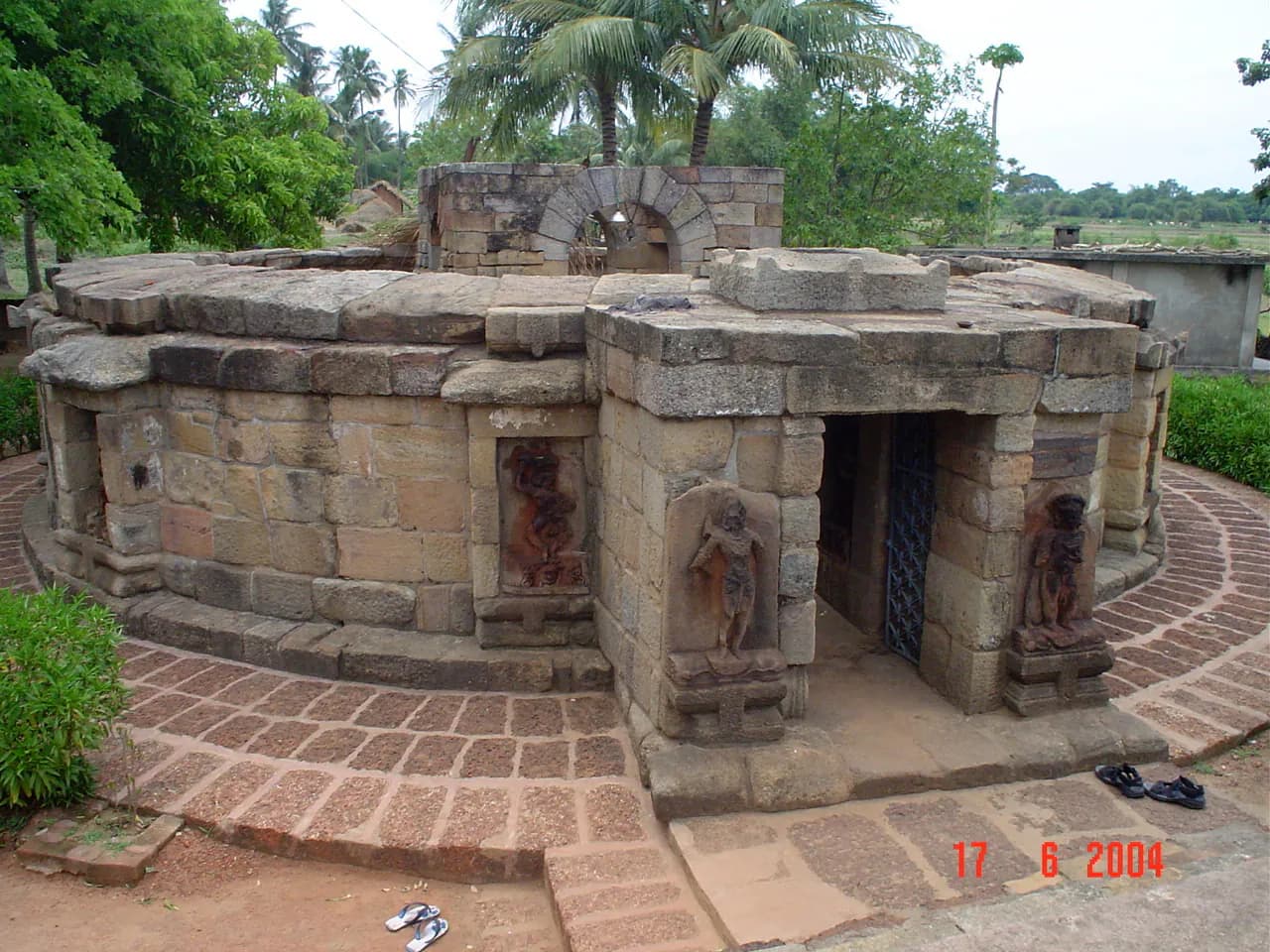
Featured
80% Documented
Hirapur, Khurda, Bhubaneswar (752055), Odisha, India, Odisha
The late afternoon sun cast long shadows across the circular platform, highlighting the weathered stone of the Chausath Yogini Temple at Hirapur. Ascending the worn steps, I felt a palpable shift, a sense of stepping back into time. This wasn't just another temple; it was a fortress of feminine power, a hypaethral shrine dedicated to sixty-four yoginis, the attendants of Goddess Durga. Unlike the towering shikharas that dominate Gujarat's temple landscape, this structure was strikingly different – a circular enclosure, open to the sky, exuding an aura of ancient mystique. The temple, dating back to the 9th century, is a testament to the architectural prowess of the Somavamsi dynasty. The circular wall, built of laterite blocks, encloses a paved courtyard approximately 230 feet in diameter. This open-air design, unique in Odisha's temple architecture, allows the celestial bodies to be a direct part of the worship, a concept that resonated deeply with me. Having documented the intricate, enclosed spaces of Gujarat's sun temples, this open-air sanctuary felt both liberating and strangely intimate. Sixty niches, each originally housing a yogini sculpture, punctuate the inner face of the circular wall. Many of these sculptures are now missing or damaged, victims of time and perhaps iconoclasm. Yet, the remaining yoginis, carved from chlorite, display a remarkable dynamism. Their postures, some serene, some fierce, capture a spectrum of emotions and powers. I was particularly struck by the intricate detailing of their ornaments and the individualized expressions on their faces. They weren't mere representations of divine attendants; they were individuals, each with a story to tell. This contrasted sharply with the more standardized depictions of deities I'd encountered in Gujarat's temples. At the center of the courtyard stands a small, rectangular shrine dedicated to Lord Shiva. This placement, within the circle of yoginis, speaks volumes about the tantric influences prevalent during the temple's construction. The yoginis, representing various forms of Shakti, encircle the male principle, Shiva, symbolizing a cosmic balance of power. This visual representation of tantric philosophy was a powerful experience, a far cry from the Vaishnava and Shaiva traditions that dominate Gujarat's religious landscape. Walking along the circular ambulatory, I noticed the subtle variations in the height of the wall. The uneven terrain has been cleverly incorporated into the design, with the wall rising and falling to maintain the circular plan. This sensitivity to the natural landscape, a hallmark of many ancient Indian structures, was truly impressive. It reminded me of the stepwells of Gujarat, where architecture seamlessly blends with the environment. The outer wall of the temple, though less ornate than the inner, features several smaller niches housing additional deities. These figures, though weathered, add another layer of complexity to the temple's iconography. I spent a considerable amount of time studying these smaller sculptures, trying to decipher their identities and significance. The experience felt like peeling back layers of history, uncovering the rich tapestry of beliefs and practices that shaped this sacred space. As the sun began to set, casting a warm golden glow over the temple, I felt a profound sense of peace. The Chausath Yogini Temple at Hirapur is more than just an architectural marvel; it's a living testament to a complex spiritual tradition. It's a place where the boundaries between the earthly and the divine blur, where the energies of the yoginis still seem to linger in the air. Leaving the temple, I carried with me not just photographs and notes, but a deep appreciation for the diversity and richness of India's cultural heritage. It was a journey of discovery, a reminder that there are always new stories to be found, new perspectives to be gained, just beyond the familiar landscapes of home.
Temple
Eastern Ganga Period
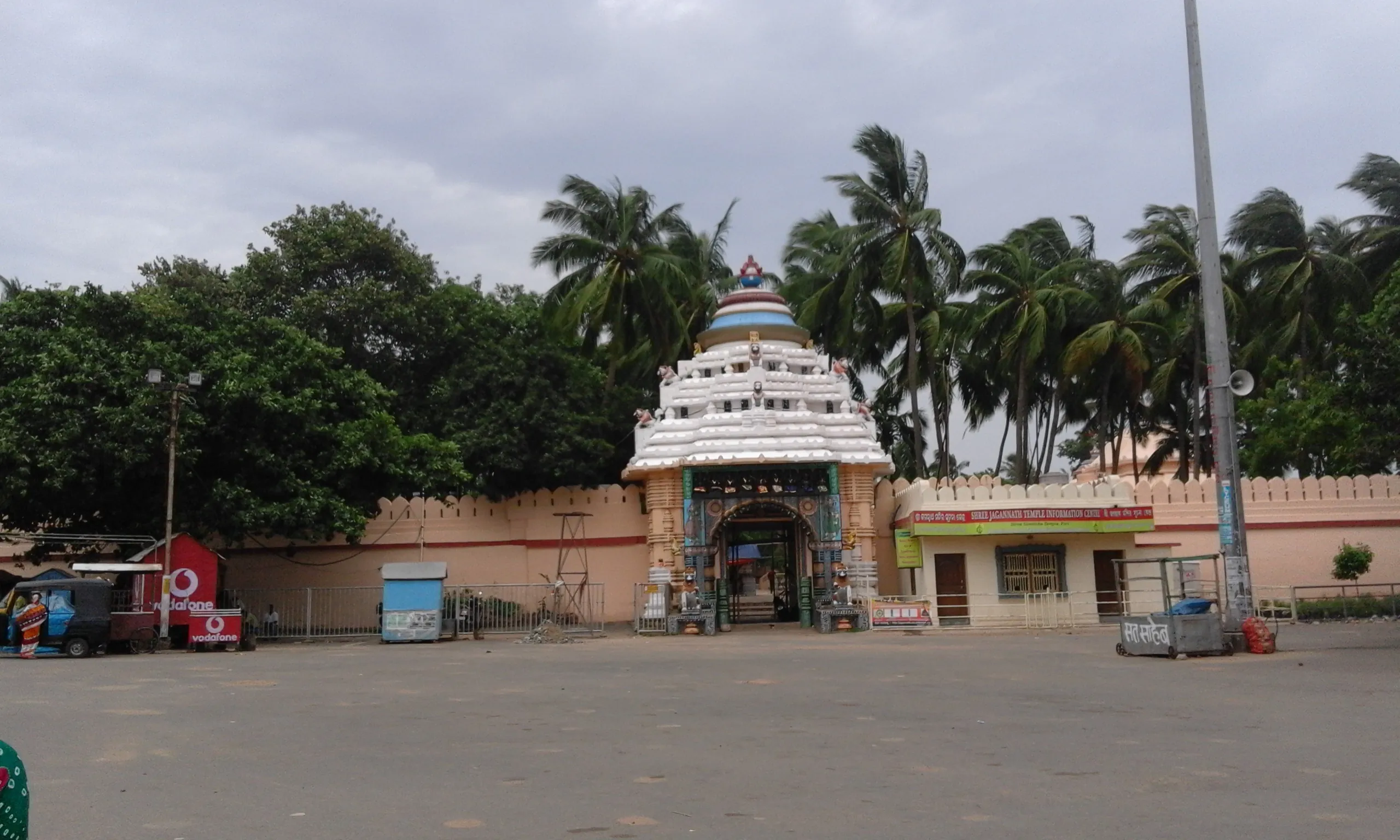
Featured
80% Documented
Grand Road, Puri, Puri (752002), Odisha, India, Odisha
The midday sun beat down on the sand-coloured walls of the Gundicha Temple, lending a warm glow to the laterite stone. Standing within its precincts, I felt a palpable shift in atmosphere from the bustling Jagannath Temple a few kilometres away. While Jagannath’s abode vibrates with constant activity, Gundicha, known as the Garden House of Jagannath, exuded a serene, almost pastoral tranquility. This, I learned, is where the deities – Jagannath, Balabhadra, and Subhadra – spend their annual nine-day vacation during the Rath Yatra. My Chennai-trained eyes, accustomed to the granite grandeur of Dravidian architecture, were immediately struck by the Kalinga style’s unique characteristics. The temple, though smaller than Jagannath’s, shares a similar plan, with a deul (sanctum tower), jagamohan (assembly hall), and nata-mandir (festival hall). However, the deul’s curvilinear tower, a hallmark of Kalinga architecture, differed significantly from the pyramidal vimanas I was familiar with. The tower’s gentle upward sweep, culminating in a rounded amalaka and kalasa finial, created a sense of flowing movement, almost as if reaching towards the heavens. The absence of elaborate sculptural ornamentation, so characteristic of South Indian temples, further emphasized the temple's elegant simplicity. The jagamohan, with its pyramidal roof, provided a cool respite from the Odisha sun. Its plain walls, devoid of the intricate carvings seen in Dravidian mandapas, allowed the eye to focus on the overall proportions and the play of light and shadow. I noticed the use of iron beams in the construction of the roof, a feature rarely seen in South Indian temples of a similar period. This hinted at the region's historical expertise in metallurgy and its incorporation into temple architecture. The nata-mandir, a later addition to the complex, stood apart with its rectangular plan and sloping roof. Its open sides allowed for a free flow of air and provided a perfect vantage point for witnessing the rituals and festivities associated with the Rath Yatra. I could almost picture the deities being seated here, enjoying the devotional performances and the adulation of their devotees. As I walked around the temple, I observed the unique decorative elements that distinguished the Kalinga style. The pidha mundis, miniature replicas of the main tower, adorning the roofline, added a rhythmic visual interest. The khura, a decorative horse-shoe shaped element above the doorway, and the alasakanyas, celestial nymphs gracing the walls, provided subtle yet significant embellishments. While less profuse than the sculptural programs of South Indian temples, these elements possessed a distinct charm and conveyed a sense of refined elegance. The temple's connection to the Rath Yatra is palpable. The wide open space in front of the temple, known as the Bada Danda, serves as the main thoroughfare for the colossal chariots. Standing there, I imagined the electrifying atmosphere during the festival, the air thick with incense and the chants of devotees pulling the chariots. The Gundicha Temple, during those nine days, transforms from a tranquil retreat into the epicentre of a vibrant spiritual celebration. My visit to the Gundicha Temple was more than just an architectural exploration; it was an immersion into a different cultural and spiritual landscape. While the architectural vocabulary differed significantly from what I was accustomed to, the underlying devotion and the sanctity of the space resonated deeply. The temple’s simplicity, its connection to nature, and its role in the grand spectacle of the Rath Yatra offered a unique perspective on temple architecture and its role in shaping religious and cultural practices. It reinforced the idea that architectural styles, while diverse, ultimately serve as conduits for human spirituality and cultural expression.
Temple
Eastern Ganga Period
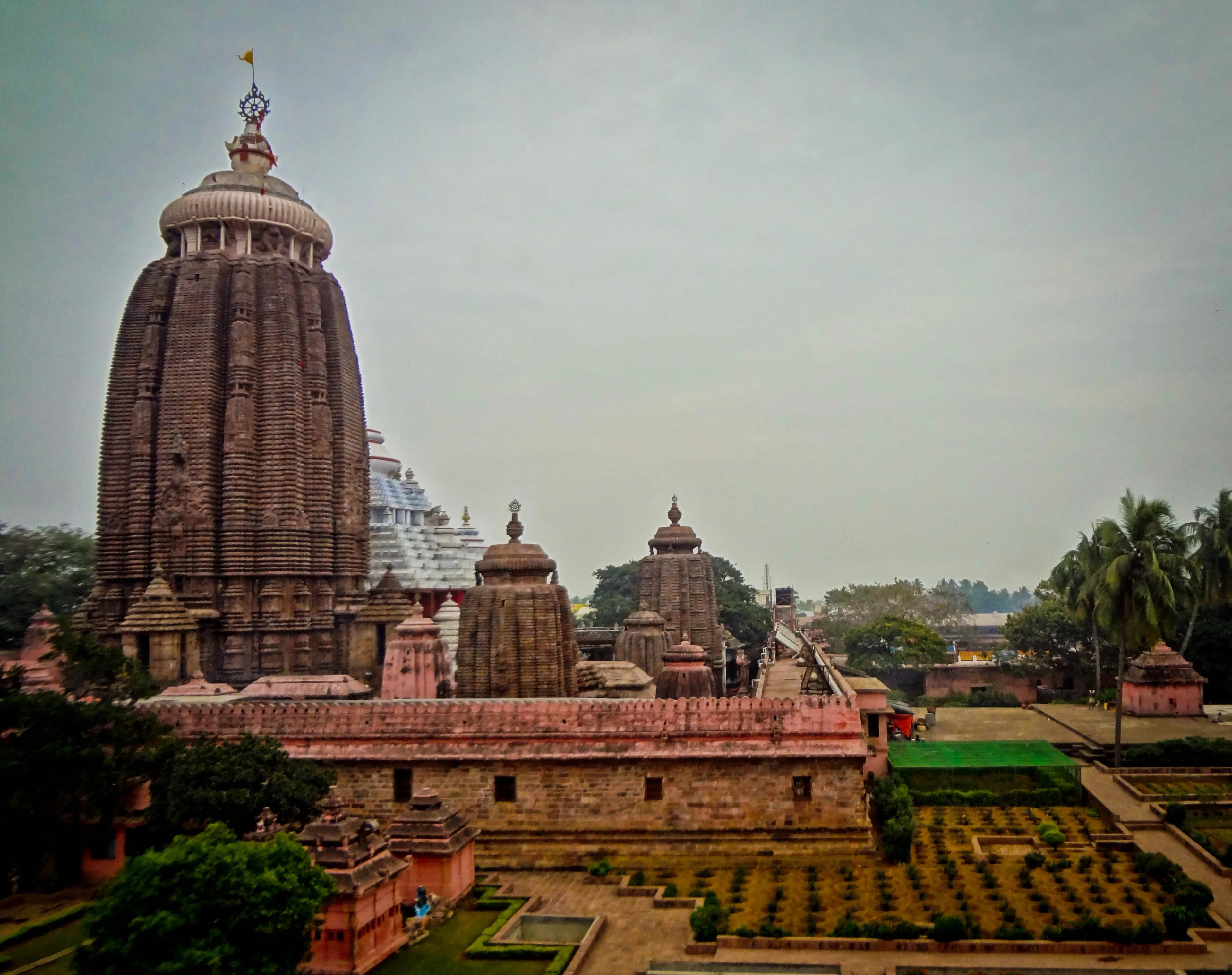
Featured
80% Documented
Grand Road, Puri, Puri (752001), Odisha, India, Odisha
The air, thick with the scent of incense and the rhythmic chanting of Sanskrit hymns, vibrated with a palpable energy. Standing before the Jagannath Temple in Puri, I felt an immediate sense of being transported, not just to another era, but to another realm entirely. The colossal curvilinear shikhara of the main temple, a beacon against the Odisha sky, dominated the landscape, its intricate carvings a testament to the skill of the ancient Kalinga artisans. My visit to Puri had long been anticipated. As someone deeply immersed in the study of ancient Indian architecture, the Jagannath Temple, with its unique Kalinga style, held a special allure. The temple complex, enclosed within massive laterite walls, felt like a city within a city, a microcosm of the cosmos itself. The sheer scale of the structure is awe-inspiring. The main temple, dedicated to Lord Jagannath, along with the adjacent temples of Balabhadra and Subhadra, rise on a raised platform, creating a sense of elevation and grandeur. The Nila Chakra, the iconic blue disc atop the main shikhara, gleamed under the afternoon sun. Its eight spokes, radiating outwards, seemed to symbolize the temple’s reach, its influence extending far beyond the physical confines of its walls. I spent a considerable amount of time examining the intricate carvings that adorned every inch of the temple’s exterior. The narrative panels depicting scenes from the epics, the celestial beings frozen in graceful poses, and the intricate floral motifs, all spoke volumes about the rich artistic traditions of the region. One of the most striking features of the Jagannath Temple is its unique construction technique. Unlike many other temples in India built with dressed stone, this temple is primarily constructed using laterite blocks. The softness of this material allowed for intricate carvings, but also meant that the temple has undergone several renovations and repairs throughout its history, adding layers of architectural history upon each other. This palimpsest of styles, from the original Kalinga architecture to later influences, makes it a fascinating case study for anyone interested in the evolution of temple architecture in India. Inside the temple, the atmosphere was charged with devotion. The dimly lit sanctum sanctorum, where the deities reside, was shrouded in an aura of mystery. While non-Hindus are not permitted inside, the energy emanating from within was palpable even from the outer courtyard. The sounds of chanting, the clanging of bells, and the aroma of offerings created a sensory experience that was both overwhelming and deeply moving. I was particularly intrigued by the temple’s kitchen, considered the largest in the world. The sheer scale of the operations, with hundreds of cooks preparing food for thousands of devotees every day, was astonishing. The traditional methods of cooking, using earthen pots and firewood, have been preserved for centuries, adding another layer to the temple’s cultural significance. As I walked around the complex, observing the pilgrims from all walks of life, I realized that the Jagannath Temple is more than just a monument of architectural brilliance. It is a living, breathing entity, a testament to the enduring power of faith and tradition. It is a place where the sacred and the secular intersect, where history and mythology intertwine, and where the human spirit finds solace and connection. Leaving the temple, I carried with me not just photographs and notes, but a profound sense of awe and a deeper understanding of the rich tapestry of Indian culture.
Temple
Eastern Ganga Period

UNESCO
Featured
85% Documented
Konark, Puri, Konark (752111), Odisha, India, Odisha
The colossal chariot of the Sun God, frozen in stone, dominates the landscape at Konark. Emerging from the morning mist, the temple, even in its fragmented state, exudes an aura of power and intricate artistry that is simply breathtaking. As a Chennai native steeped in the Dravidian architectural tradition, my visit to this Kalinga style marvel was an exercise in appreciating the diverse tapestry of Indian temple architecture. The sheer scale of the Konark Sun Temple is the first thing that strikes you. The temple, conceived as a gigantic chariot with twelve pairs of exquisitely carved wheels drawn by seven horses, speaks volumes about the ambition and skill of the 13th-century architects. While the main temple (vimana) has largely collapsed, the Jagamohan (assembly hall) remains remarkably intact, offering a glimpse into the temple's former glory. The pyramidal roof of the Jagamohan, rising in tiers adorned with intricate sculptures, is a testament to the Kalinga style's distinctive curvilinear silhouette, a stark contrast to the towering gopurams I'm accustomed to seeing in Dravidian temples. The wheels of the chariot are not mere decorative elements; they are sundials, accurately measuring time. The spokes are carved with intricate floral patterns and miniature figures, showcasing the artisans' mastery over detail. I spent a considerable amount of time examining these wheels, fascinated by their precision and artistic beauty. They serve as a reminder of the deep connection between architecture, astronomy, and spirituality in ancient India. The temple's outer walls are covered with a profusion of sculptures, depicting a vibrant panorama of life in 13th-century Odisha. From deities and celestial beings to courtly scenes, erotic sculptures, and depictions of everyday life, the carvings offer a fascinating window into the social and cultural fabric of the time. The erotic sculptures, while controversial to some, are an integral part of the temple's iconography, representing the cycle of creation and the celebration of life. Their presence, alongside depictions of spiritual and secular themes, highlights the holistic worldview that permeated ancient Indian art. One striking difference I observed compared to South Indian temples is the prominence of iron beams used in the Konark temple's construction. While the exact purpose of these iron beams is still debated, their presence suggests a sophisticated understanding of metallurgy and engineering. This contrasts with the predominantly stone-based construction techniques employed in Dravidian temples. The Natmandir (dance hall), though now in ruins, still echoes with the ghosts of dancers and musicians who once graced its platform. I could almost visualize the vibrant performances that would have taken place here, accompanied by the rhythmic beating of drums and the melodious strains of stringed instruments. The temple's architecture, with its open spaces and strategically placed platforms, seems designed to facilitate grand spectacles and processions, reinforcing the Sun God's role as a source of energy and life. Walking through the ruins of the Konark Sun Temple, I felt a profound sense of awe and melancholy. Awe at the sheer scale and artistic brilliance of the structure, and melancholy at the ravages of time and the forces of nature that have taken their toll. Yet, even in its fragmented state, the temple stands as a powerful testament to the ingenuity and artistic vision of its creators. It serves as a bridge across centuries, connecting us to a rich cultural heritage and reminding us of the enduring power of human creativity. My visit to Konark was not just a sightseeing trip; it was a pilgrimage, a journey into the heart of India's architectural and spiritual heritage. It reinforced my belief that the study of ancient architecture is not just an academic pursuit; it is a way to connect with the past, understand the present, and inspire the future.
Temple
Eastern Ganga Period
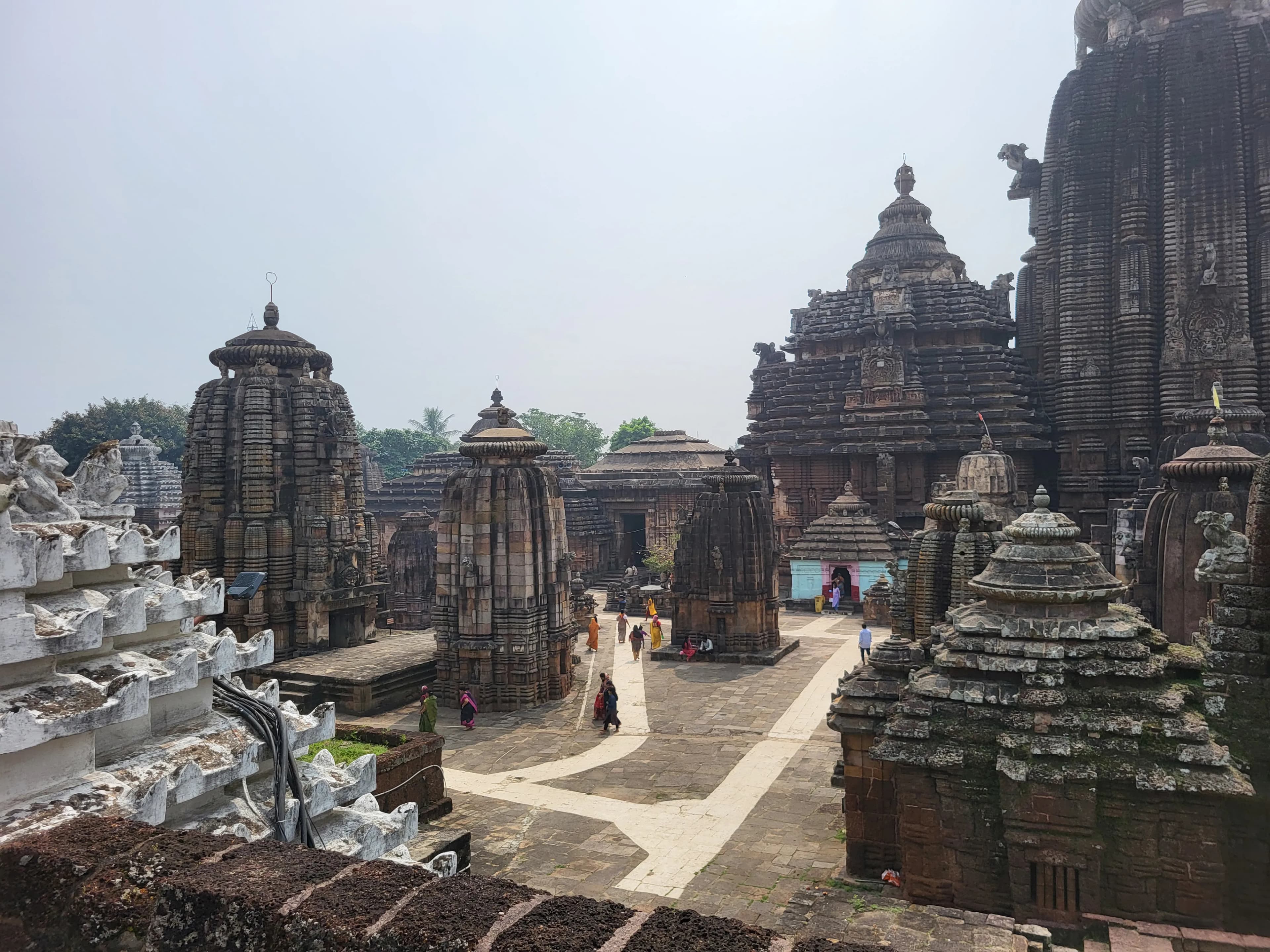
Featured
80% Documented
Lingaraj Temple Road, Bhubaneswar, Khordha (751002), Odisha, India, Odisha
The sun beat down on my neck, the Odisha heat a stark contrast to the Delhi winters I was accustomed to. But the discomfort melted away as I stood before the Lingaraj Temple in Bhubaneswar, a monument that whispered tales of a thousand years. Having explored countless temples across North India, I thought I had a grasp on the nuances of Kalinga architecture, but Lingaraj proved to be in a league of its own. The sheer scale of the complex, enclosed within a high compound wall, was the first thing that struck me. The main temple, dedicated to Harihara, a combined form of Shiva and Vishnu, soared upwards, its deul (tower) a masterpiece of intricate carvings. Unlike the sandstone and marble I was familiar with in the north, this temple was constructed of laterite, a locally available reddish-brown stone, which lent it a unique earthy hue. The deul, reaching a height of 55 meters, was covered in a dense tapestry of sculptures – deities, mythical creatures, and intricate floral patterns, each vying for attention. I spent hours circumambulating the temple, my gaze constantly drawn upwards. The vertical lines of the deul, punctuated by horizontal bands of carvings, created a powerful sense of upward movement, as if the entire structure was striving to reach the heavens. The jagamohan (assembly hall) and natamandir (dance hall), though smaller than the main deul, were equally impressive, their surfaces adorned with elaborate friezes depicting scenes from Hindu mythology. One of the most striking features of the temple was the sheer number of subsidiary shrines scattered within the complex. Each shrine, though smaller in scale, echoed the architectural style of the main temple, creating a sense of harmonious unity. I noticed that many of these shrines were dedicated to various forms of Shakti, the divine feminine, highlighting the importance of goddess worship in this region. As I moved closer to the main entrance, the air grew thick with the scent of incense and the murmur of chanting. Though non-Hindus are not allowed inside the sanctum sanctorum, I could feel the palpable sense of devotion emanating from within. I observed the devotees, their faces etched with reverence, offering flowers and coconuts to the deity. It was a powerful reminder of the living faith that animates these ancient stones. The intricate carvings on the temple walls deserved closer inspection. I noticed a recurring motif of the naga, the serpent deity, often depicted with multiple heads and coiled around various deities. The presence of the naga, a symbol of fertility and protection, underscored the temple's connection to the natural world. I also observed depictions of erotic sculptures, a common feature of Kalinga temples, which are believed to represent the cycle of creation and regeneration. The experience of visiting Lingaraj was not just about admiring the architecture; it was about immersing myself in the cultural tapestry of Odisha. The temple, with its rich history and vibrant present, served as a window into the religious and artistic traditions of this fascinating region. It was a humbling reminder of the enduring power of faith and the remarkable artistry of our ancestors. As I left the temple complex, the setting sun casting long shadows across the laterite walls, I felt a deep sense of gratitude for having witnessed this architectural marvel. Lingaraj was not just a temple; it was a testament to the enduring spirit of India.
Temple
Eastern Ganga Period
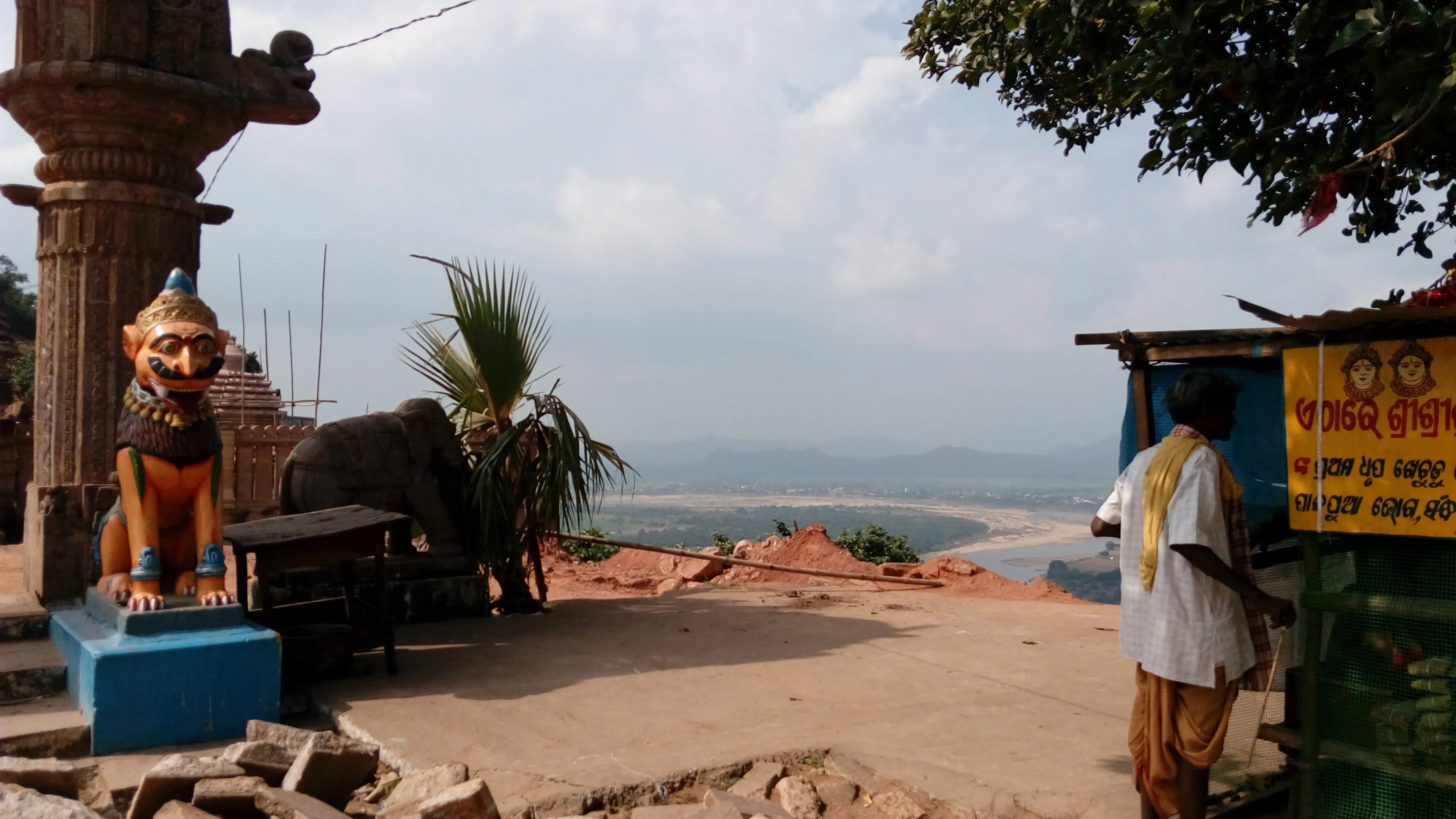
Featured
80% Documented
Purshottampur, Ganjam, Brahmapur (761003), Odisha, India, Odisha
The wind whipped my dupatta around me as I climbed the final steps to the Maa Tara Tarini temple, perched high on a hill overlooking the Rushikulya River. Having explored countless forts and palaces in Rajasthan, I’m always eager to experience new forms of heritage, and this Shakti Peetha in Odisha held a particular allure. The climb itself, though steep, was punctuated by the vibrant energy of devotees, their chants and the clang of bells creating a palpable buzz in the air. The temple complex is relatively small, a stark contrast to the sprawling citadels I’m accustomed to. Two brightly painted terracotta idols of the twin goddesses, Tara and Tarini, reside within the sanctum sanctorum. Unlike the elaborate marble carvings and sandstone latticework of Rajasthani architecture, the temple here embraces a simpler aesthetic. The main structure, while recently renovated, retains its traditional essence. The use of laterite stone and the distinctive sloping roof, reminiscent of the region's vernacular architecture, grounded the sacred space in its local context. What struck me most was the panoramic view from the hilltop. The Rushikulya River snaked its way through the verdant landscape below, glinting silver under the afternoon sun. The Bay of Bengal shimmered in the distance, a vast expanse of blue merging with the sky. This vantage point, I realized, was integral to the temple's significance. It felt as though the goddesses were watching over the land, their protective gaze extending to the horizon. I spent some time observing the rituals. Unlike the structured puja ceremonies I’ve witnessed in Rajasthan, the practices here felt more organic, driven by fervent devotion. Animal sacrifice, a practice largely absent in my home state, is still prevalent here, a stark reminder of the diverse tapestry of Indian religious traditions. While personally unsettling, it offered a glimpse into the deep-rooted beliefs and practices of the region. The temple walls are adorned with vibrant murals depicting scenes from Hindu mythology, particularly those related to the goddesses Tara and Tarini. The colours, though faded in places, still held a vibrancy that spoke to the enduring power of these narratives. I noticed that the artistic style differed significantly from the miniature paintings and frescoes I’ve seen in Rajasthan. The lines were bolder, the figures more stylized, reflecting a distinct regional artistic vocabulary. One of the priests, noticing my keen interest, explained the significance of the twin goddesses. They are considered manifestations of Shakti, the divine feminine energy, and are revered as protectors, particularly by seafarers and fishermen. He pointed out the numerous small terracotta horses offered by devotees, symbols of their wishes fulfilled. This resonated with me; the practice of offering votive objects is common across India, a tangible expression of faith and hope. As I descended the hill, the rhythmic chanting of the devotees still echoed in my ears. My visit to the Maa Tara Tarini temple was a departure from the grandeur of Rajasthan's palaces, yet it offered a different kind of richness. It was a journey into the heart of a vibrant, living tradition, a testament to the diverse expressions of faith that weave together the fabric of India. The simplicity of the architecture, the raw energy of the rituals, and the breathtaking natural setting combined to create a truly unique and unforgettable experience. It reinforced the understanding that heritage isn't just about magnificent structures, but also about the intangible cultural practices that give them meaning.
Temple
Eastern Ganga Period
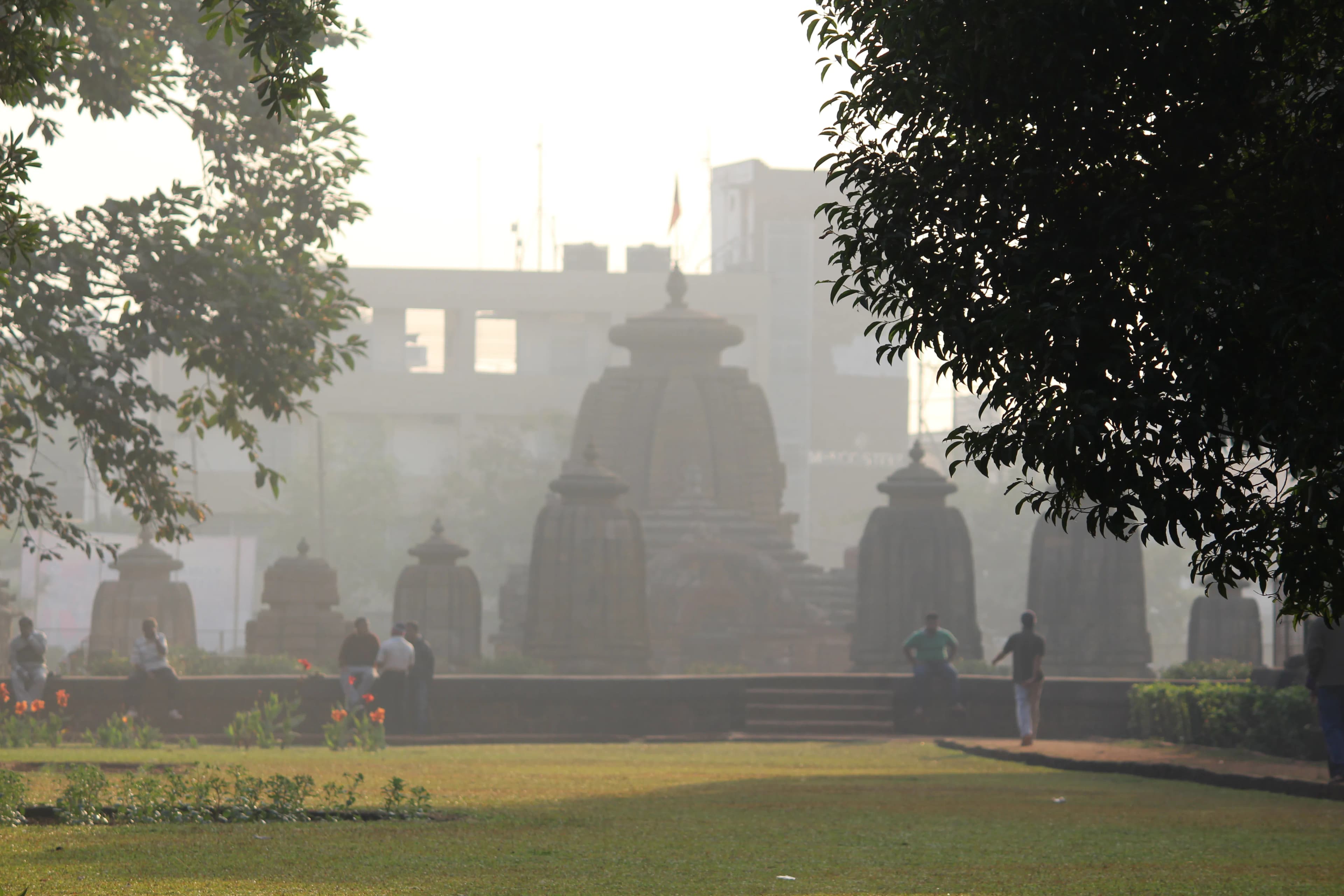
Featured
80% Documented
Kedar Gouri Vihar, Khordha, Bhubaneswar (751002), Odisha, India, Odisha
The midday sun cast long shadows across the laterite stones of the Mukteswara Temple, etching the intricate carvings into stark relief. Standing before this 10th-century marvel in Bhubaneswar, I felt a palpable shift, a whisper of the past carried on the gentle breeze. This wasn't just another temple; it felt like a pivotal moment captured in stone, a bridge between the simpler Kalinga architecture of earlier centuries and the ornate grandeur that would define the later temples of Odisha. The Mukteswara, though smaller than its successors like the Rajarani and Lingaraj, possesses a captivating elegance. Its sandstone gateway, the torana, is arguably its most celebrated feature. Covered in a tapestry of carvings – nagas, yakshas, and intricate scrollwork – it stands as a testament to the skill of the ancient artisans. I spent a considerable amount of time studying the torana, tracing the lines of the sculptures with my fingers, marveling at the dynamism captured within the static stone. The depiction of Lakulisa, a Shaivite ascetic, particularly caught my eye. His serene countenance, framed by flowing locks, seemed to radiate a quiet wisdom, a stark contrast to the writhing forms of the mythical creatures surrounding him. Passing through the torana, the compact courtyard opened before me, the main temple, or vimana, dominating the space. The vimana, built in the rekha deul style, rises gracefully towards the sky, its curvilinear form a testament to the architectural prowess of the period. Unlike the later temples, the Mukteswara’s vimana is relatively uncluttered, allowing the eye to appreciate the flowing lines and the subtle interplay of light and shadow. The decorative elements, though present, are restrained, emphasizing the overall harmony of the structure. I noticed the distinct use of chaitya arches, a recurring motif in Odishan architecture, adorning the walls. These miniature shrines, each housing a deity, added a layer of symbolic depth to the structure. The jagamohana, or assembly hall, connected to the vimana, is equally captivating. Its pyramidal roof, adorned with intricate carvings, provided a welcome respite from the midday sun. Inside, the atmosphere was noticeably cooler, the air thick with the scent of incense and the murmur of prayers. I observed the elaborate carvings on the pillars, each depicting scenes from mythology and daily life. The narrative quality of these sculptures was striking, each panel telling a story, transporting the viewer to a different time and place. One aspect that truly sets the Mukteswara apart is its experimental nature. It's often referred to as a "gem of Orissan architecture," and I understood why. The temple showcases the first extensive use of sculptures on the exterior walls, a feature that would become a hallmark of later temples. The intricate latticework on the windows, the delicate floral motifs, and the playful depictions of animals all hinted at a burgeoning artistic confidence, a willingness to push the boundaries of traditional architectural norms. As I circled the temple, absorbing the details, I couldn't help but reflect on the continuity of tradition. The Mukteswara, though centuries old, remains a living testament to the enduring power of faith and artistry. The rituals performed within its walls, the hymns chanted, the offerings made – these are echoes of practices that have been carried out for generations. It's this unbroken thread, this connection to the past, that makes the Mukteswara not just a historical monument but a vibrant part of the cultural fabric of Odisha. Leaving the temple grounds, I carried with me not just images of carved stone and intricate sculptures, but a deeper appreciation for the rich tapestry of Indian architectural history.
Temple
Eastern Ganga Period
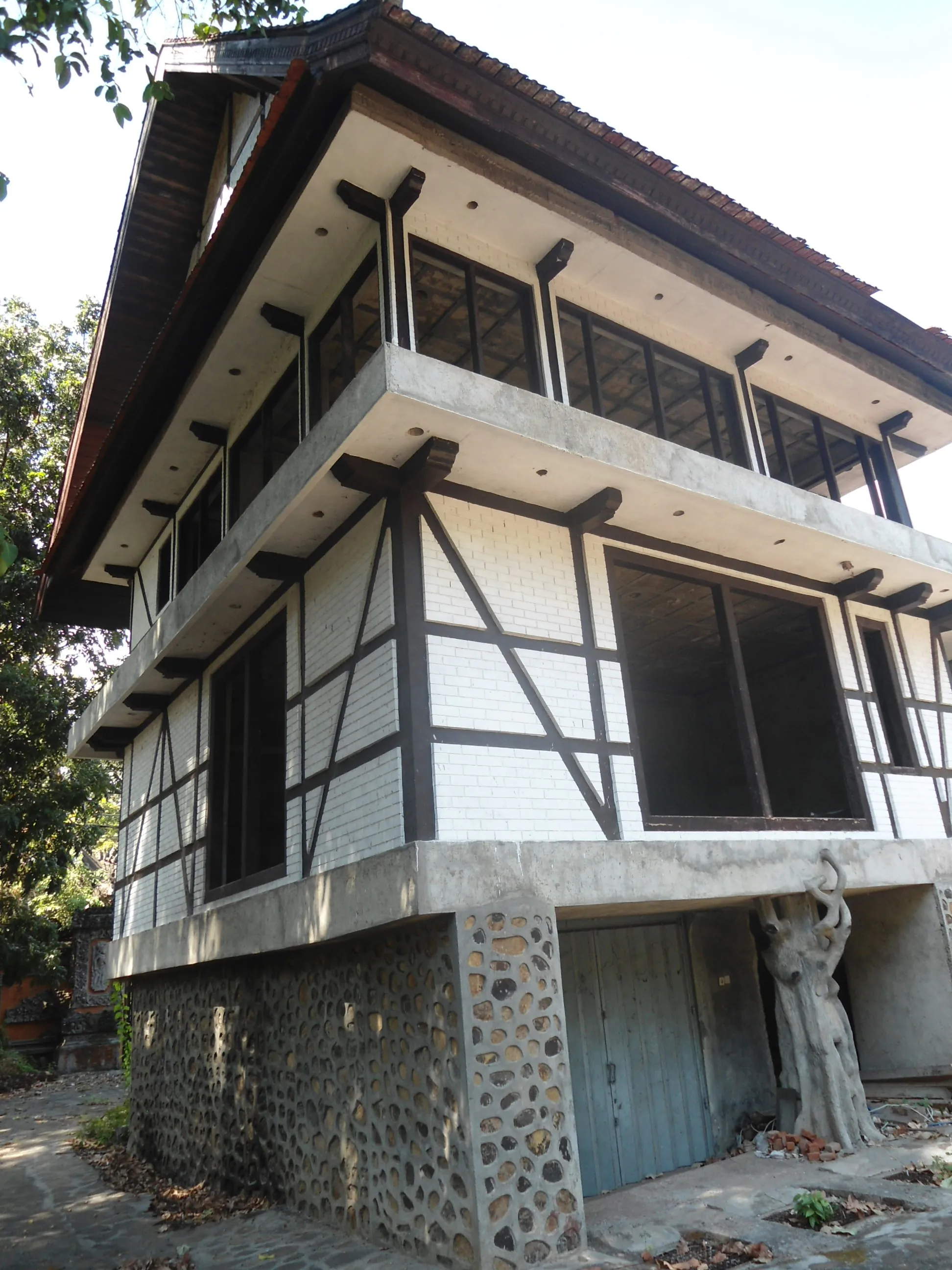
Featured
80% Documented
Chakra Tirtha Road, Puri, Puri (752001), Odisha, India, Odisha
The imposing white facade of Puri Palace, shimmering under the Odisha sun, felt less like a hotel and more like a time capsule. Having explored countless palaces and forts across North India, I’ve developed a keen eye for architectural nuances, and Puri Palace whispered stories of a bygone era from the moment I stepped onto its manicured lawns. Located a comfortable distance from the bustling Jagannath Temple, it offered a sanctuary of calm amidst the vibrant spiritual energy of Puri. The palace’s architecture is a fascinating blend of colonial and traditional Kalinga styles. The symmetrical facade, reminiscent of British Raj-era buildings, is punctuated by intricately carved balconies and jharokhas, a clear nod to Odisha’s rich artistic heritage. I spent a good hour simply tracing the delicate floral patterns and mythical figures etched into the sandstone, each telling a silent tale. The sprawling verandahs, shaded by bougainvillea in full bloom, offered glimpses into the central courtyard, a tranquil oasis centered around a murmuring fountain. Stepping inside, the cool marble floors offered respite from the coastal heat. The high ceilings, adorned with ornate chandeliers, added to the sense of grandeur. While the palace has been modernized with all the expected amenities, the restoration has been done with a sensitive hand, preserving the original character of the building. The antique furniture, carefully placed throughout the public areas, spoke of a time of leisurely elegance. I particularly admired the collection of old photographs adorning the walls, capturing moments from the palace’s history and offering a glimpse into the lives of its former inhabitants. My room, a spacious suite overlooking the gardens, was a delightful blend of old-world charm and modern comfort. The four-poster bed, draped in crisp white linen, was undeniably inviting. While the modern bathroom was a welcome addition, it was the small details that truly captivated me: the antique writing desk tucked into a corner, the intricately carved wooden chest, the vintage telephone resting on a small side table. These weren't just decorative elements; they were tangible links to the past, whispering stories of the people who had lived and loved within these walls. One evening, I found myself on the rooftop terrace, watching the sunset paint the sky in hues of orange and gold. The distant sounds of temple bells mingled with the gentle sea breeze, creating an atmosphere of profound serenity. From this vantage point, I could see the spires of the Jagannath Temple rising above the cityscape, a testament to the enduring spiritual heart of Puri. It was a moment of pure magic, a reminder of the power of place to connect us to something larger than ourselves. The dining experience at Puri Palace was equally memorable. The restaurant, with its high ceilings and elegant décor, offered a menu that blended traditional Odia cuisine with international flavors. I opted for the local delicacies, savoring the rich flavors of Dalma and the subtle spices of Machha Besara. The staff, dressed in traditional attire, were attentive and knowledgeable, happy to share insights into the history and culture of the region. My stay at Puri Palace wasn't just a hotel stay; it was an immersion in history and culture. It was a chance to step back in time and experience the grandeur of a bygone era. While I’ve explored the majestic forts of Rajasthan and the serene monasteries of Ladakh, Puri Palace offered a unique perspective on India's rich heritage. It’s a place where history whispers from every corner, where the past and present intertwine seamlessly, and where the spirit of Odisha comes alive. For any traveler seeking a truly authentic experience, Puri Palace is a must-visit destination.
Palace
Eastern Ganga Period
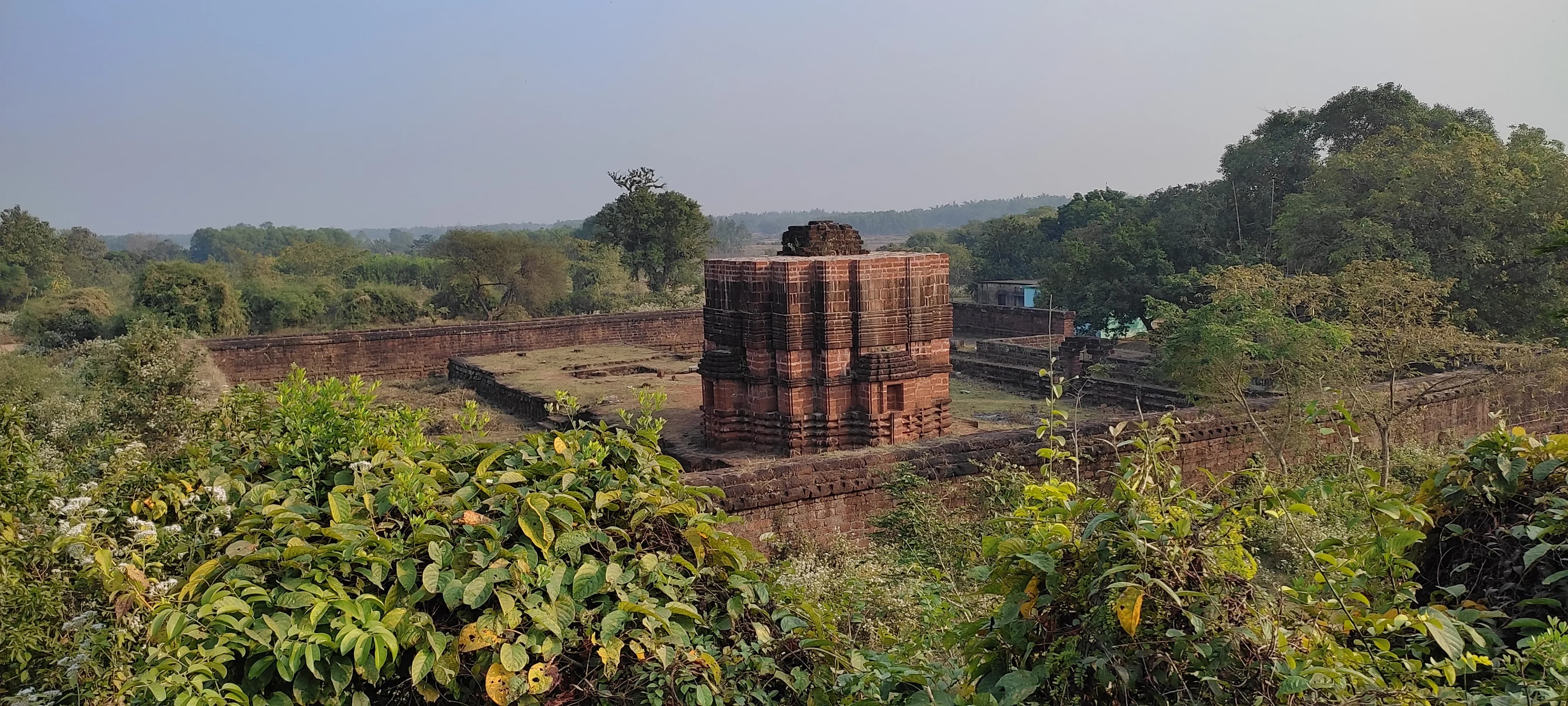
Featured
80% Documented
Raibania, Balasore (756001), Odisha, India, Odisha
The imposing laterite walls of Raibania Fort, bathed in the warm Odisha sun, rose before me like a terracotta giant. Having explored the intricate stone carvings of Gujarat's architectural wonders for years, I was eager to experience this unique fort, a testament to a different era and a different building tradition. Located near Balasore, far from my usual haunts, Raibania offered a refreshing change of pace and a glimpse into the architectural heritage of eastern India. The sheer scale of the fort is immediately striking. Its massive ramparts, constructed from laterite blocks, stretch over a vast area, enclosing within them a silent history. Unlike the precisely cut sandstone of Gujarat's forts, the laterite here gives the structure a rougher, more organic feel. The reddish-brown hue of the stone, almost earthy in its tone, blends seamlessly with the surrounding landscape, as if the fort itself had sprung from the very soil. Stepping through the arched gateway, I was transported back in time. The fort's interior, though largely in ruins, still whispers tales of its former glory. The remnants of barracks, stables, and administrative buildings are scattered across the grounds, each a silent witness to the fort's bustling past. I noticed the distinct lack of elaborate ornamentation, so common in Gujarati architecture. Here, functionality reigned supreme. The thick walls, strategically placed bastions, and the high vantage points offered by the ramparts spoke volumes about the fort's defensive purpose. I spent hours exploring the labyrinthine passages and crumbling walls, trying to piece together the fort's history. The absence of detailed historical records adds an element of mystery to the site, allowing one's imagination to run wild. I pictured bustling courtyards filled with soldiers, the clatter of horses' hooves, and the commands of officers echoing through the air. The silence of the present day only amplified the echoes of the past. One of the most intriguing features of Raibania Fort is its intricate water management system. Several large tanks and wells, strategically located within the fort's walls, would have provided a reliable water source during sieges. The ingenuity of the builders is evident in the design of these water bodies, which effectively harvested rainwater and ensured the fort's self-sufficiency. This pragmatic approach to architecture, so different from the ornate stepwells of Gujarat, highlighted the specific challenges and priorities of this region. Climbing to the top of the ramparts, I was rewarded with panoramic views of the surrounding countryside. The lush green fields stretched out before me, dotted with villages and temples. From this vantage point, I could appreciate the strategic importance of the fort, guarding the region from invaders. The wind whistled through the crumbling battlements, carrying with it the whispers of history. As I descended from the ramparts, I noticed the intricate brickwork in some of the remaining structures. While laterite formed the bulk of the construction, bricks were used for specific architectural elements, such as arches and doorways. The contrast between the rough texture of the laterite and the smooth surface of the bricks added a subtle visual interest to the fort's architecture. My visit to Raibania Fort was a humbling experience. It reminded me that architectural marvels are not limited to grand palaces and ornate temples. Even a seemingly simple structure like this fort, built for purely functional purposes, can possess a unique beauty and historical significance. The fort's rugged charm, its silent stories, and its connection to the land left an indelible impression on me. It was a stark contrast to the architectural vocabulary I was accustomed to, yet equally captivating. Raibania stands as a testament to the ingenuity and resilience of its builders, a silent sentinel guarding the memories of a bygone era. It is a place where history whispers in the wind, and the stones themselves tell a story.
Fort
Eastern Ganga Period
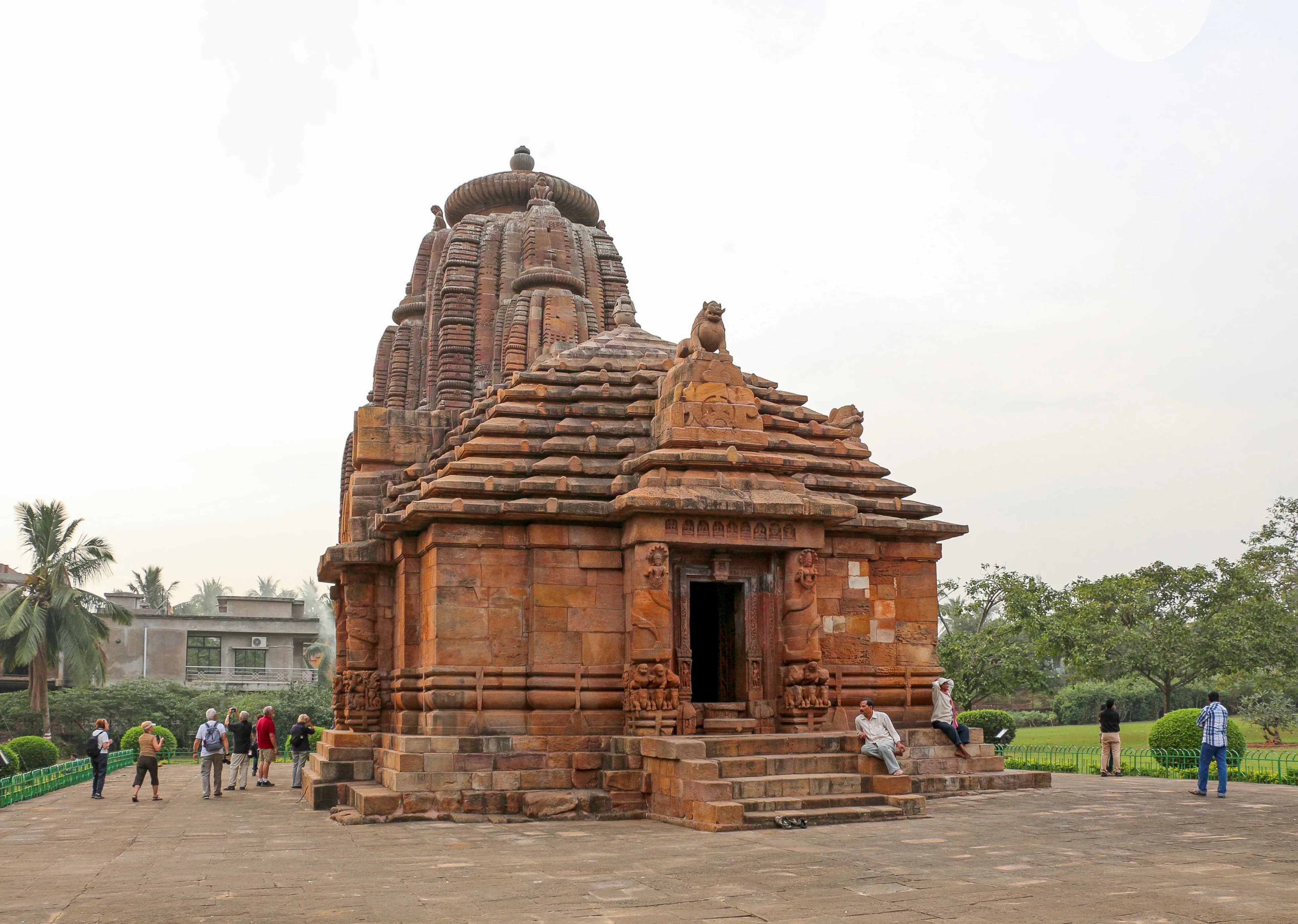
Featured
85% Documented
Tankapani Road, Khordha, Bhubaneswar (751002), Odisha, India, Odisha
The sun, a molten orb in the Bhubaneswar sky, cast long shadows across the sculpted figures adorning the Rajarani Temple. Having crisscrossed the length and breadth of North India, exploring countless temples, I thought I’d become somewhat immune to architectural marvels. But Odisha, with its unique Kalinga style, stopped me in my tracks. The Rajarani, even in its name – a moniker derived from the reddish-gold sandstone used in its construction – hinted at something special. Unlike the towering structures of Khajuraho or the intricate carvings of Konark, the Rajarani exudes a quiet elegance. The temple, raised on a platform, is surrounded by a manicured lawn, a welcome respite from the bustling city just beyond its walls. The sandstone, locally known as "rajarania," glows with a warm, almost ethereal light, particularly striking during the golden hours. It's a softer, more delicate hue than the sandstone I've encountered in Rajasthan, lending the temple a feminine grace. As I approached the deul, the main temple structure, I was immediately drawn to the intricate carvings that covered almost every inch of its surface. Unlike the narrative panels found in many North Indian temples, the Rajarani’s carvings are predominantly decorative. Sumptuous figures of nayikas (heroines) in various poses, celestial musicians, and intricate floral motifs adorn the walls. These figures, though sensual and evocative, are remarkably restrained, hinting at emotions rather than explicitly portraying them. I noticed a distinct absence of deities within the sanctum, a mystery that adds to the temple’s enigmatic charm. Local lore suggests it was once dedicated to Shiva, while others believe it was a tantric shrine. This ambiguity, rather than detracting from the experience, only deepens the sense of wonder. The temple’s architecture is a fascinating blend of styles. The curvilinear shikhara, reminiscent of the later temples of Khajuraho, rises gracefully towards the sky. However, the lower portions of the temple, with their intricate carvings and decorative bands, retain a distinct Odia flavour. I spent a considerable amount of time examining the dikpalas, the guardian deities carved on the outer walls. Their forms, though weathered by time, still retain a powerful presence, their expressions a blend of serenity and strength. One of the most striking features of the Rajarani is the presence of sculpted erotic figures, similar to those found at Konark. However, unlike the explicit depictions at the Sun Temple, the erotic carvings here are more subtle, interwoven with the decorative motifs and often difficult to discern at first glance. This integration of the sensual within the sacred speaks volumes about the holistic worldview of the time. Walking around the temple complex, I noticed several smaller shrines surrounding the main deul. These subsidiary shrines, though less ornate, echo the architectural style of the main temple. The entire complex is designed to draw the visitor’s gaze upwards, towards the soaring shikhara, creating a sense of awe and reverence. The Rajarani Temple is more than just a collection of stones and carvings; it’s a testament to the artistic and spiritual sensibilities of a bygone era. It’s a place where the boundaries between the sacred and the secular, the sensual and the spiritual, become blurred. As I left the temple grounds, the setting sun painting the sandstone a fiery orange, I felt a profound sense of peace and a renewed appreciation for the rich tapestry of Indian art and architecture. The Rajarani, though less famous than some of its counterparts, is a hidden gem, a must-see for anyone seeking to delve deeper into the heart of India's cultural heritage.
Temple
Eastern Ganga Period
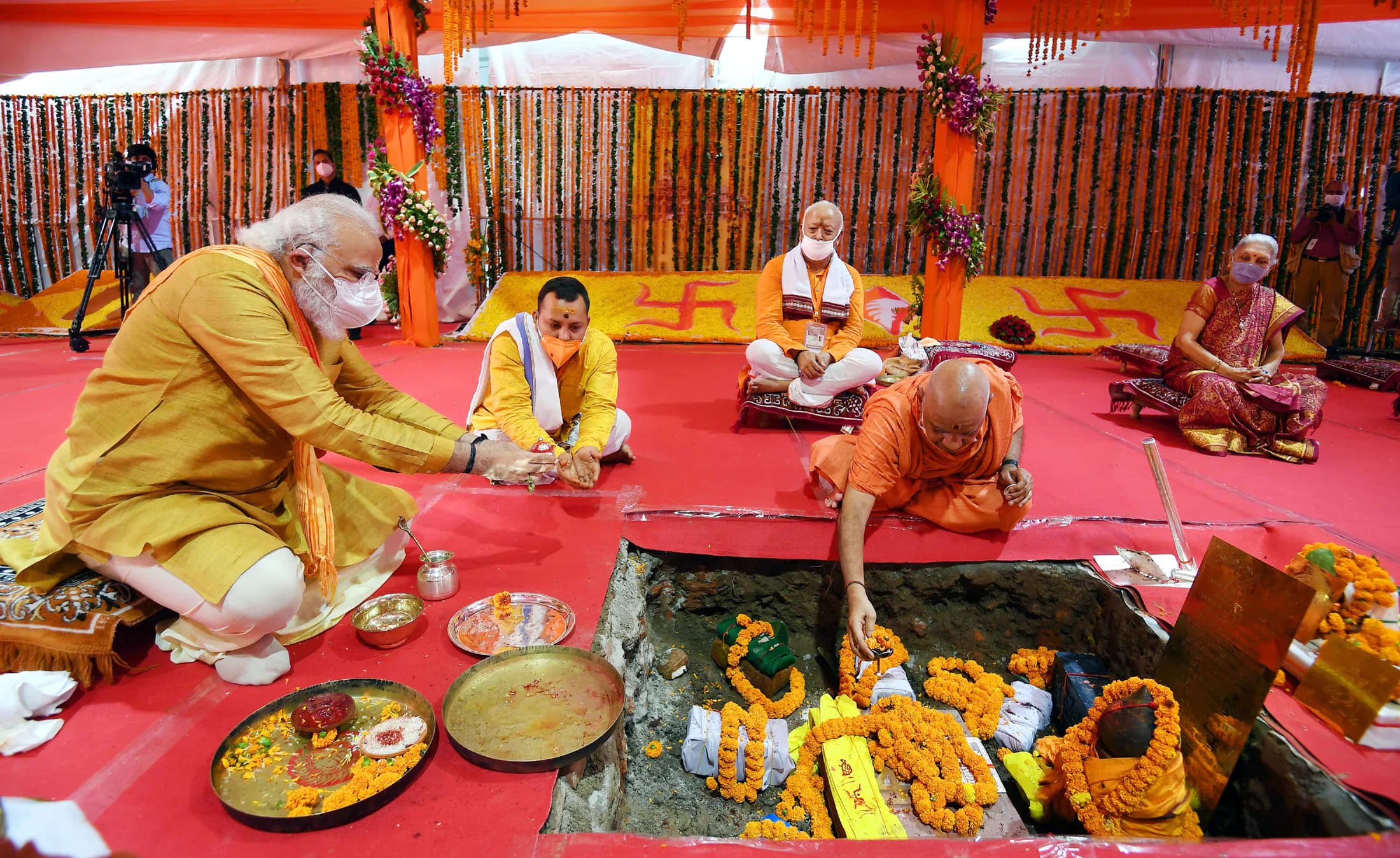
Featured
80% Documented
Ram Mandir Road, Kharvela Nagar, Bhubaneswar (751001), Odisha, India, Odisha
The midday sun cast long shadows across the laterite stones of the Ram Mandir in Bhubaneswar, illuminating the intricate carvings that adorned its surface. Having spent years documenting the architectural wonders of Gujarat, I was eager to experience the unique Kalinga style of temple architecture that Odisha is renowned for. And the Ram Mandir, though a relatively modern structure compared to some of Bhubaneswar's ancient marvels, did not disappoint. Unlike the towering shikharas of Gujarat's Solanki dynasty temples, the Ram Mandir presents a cluster of temples, each dedicated to a different deity – Ram, Lakshman, and Sita. This grouping immediately sets it apart, creating a sense of community and interconnectedness among the deities. The main temple, dedicated to Lord Ram, dominates the complex. Its curvilinear shikhara, a hallmark of the Kalinga style, rises elegantly towards the sky, its surface covered in a dense tapestry of sculpted figures. As I approached the main entrance, I was struck by the sheer profusion of carvings. Every inch of the temple walls, from the base to the pinnacle, seemed to pulsate with life. Mythological scenes, celestial beings, and intricate floral patterns intertwined, creating a visual narrative that captivated my attention. The figures, though weathered by time and the elements, retained a remarkable sense of dynamism. I noticed the distinctive elongated eyes and graceful postures of the figures, characteristic of the regional style. The detailed ornamentation, particularly around the doorways and windows, showcased the skill and artistry of the craftsmen who had painstakingly carved these stories into stone centuries ago. Inside the main sanctum, the atmosphere was hushed and reverent. The deity of Lord Ram, flanked by Sita and Lakshman, exuded a serene presence. The play of light and shadow within the sanctum added to the spiritual ambiance. While photography wasn't permitted inside, the image of the deities, bathed in the soft glow of oil lamps, remained etched in my memory. Moving to the smaller temples dedicated to Lakshman and Sita, I observed subtle variations in their architectural details. While adhering to the overall Kalinga style, each temple possessed its own unique character. The Lakshman temple, for instance, featured a slightly less ornate shikhara, while the Sita temple had a more intimate and enclosed feel. The outer walls of the complex presented a fascinating contrast to the more polished surfaces of the main temples. Here, the laterite stone was left largely unpolished, revealing its natural texture and warm hues. This created a sense of rustic charm and highlighted the intricate carvings even further. I spent a considerable amount of time studying the bas-relief panels depicting scenes from the Ramayana. The narrative unfolded across the walls, bringing the epic to life in a tangible way. I was particularly drawn to the depiction of the battle between Ram and Ravana, the dynamism of the scene captured with remarkable skill. One aspect that struck me was the integration of the temple complex with its surroundings. Unlike some of the more isolated temples I had encountered in Gujarat, the Ram Mandir felt connected to the bustling city of Bhubaneswar. Devotees flowed in and out, their prayers and rituals adding another layer to the temple's vibrant tapestry. The air was thick with the scent of incense and the sounds of chanting, creating a sensory experience that was both captivating and deeply moving. Leaving the Ram Mandir, I carried with me a profound appreciation for the Kalinga style of temple architecture. Its unique blend of grandeur and intricate detail, its seamless integration of mythology and artistry, and its connection to the living traditions of the community made it a truly unforgettable experience. It served as a powerful reminder of the enduring legacy of India's rich architectural heritage, and a testament to the skill and devotion of the craftsmen who shaped these sacred spaces.
Temple
Eastern Ganga Period

Featured
80% Documented
Sisupalgarh, Puri District, Bhubaneswar (752100), Odisha, India, Odisha
The laterite ramparts of Sisupalgarh rose before me, baked a deep, rusty red under the Odisha sun. Not the imposing, sheer walls of a Rajput fortress, but rather the sprawling, undulating remains of a city fortification, hinting at a life lived within centuries ago. Here, just a few kilometers from the bustling modernity of Bhubaneswar, lay the whispers of ancient Kalinga, a realm steeped in history and architectural ingenuity. My fingers traced the rough texture of the laterite, a porous rock formed from iron-rich soil. Its use spoke volumes about the builders’ resourcefulness and understanding of the local environment. This wasn't just a defensive structure; it was a testament to sustainable building practices, utilizing readily available materials. The ramparts, though eroded by time, still retained a sense of formidable strength. They stretched in a roughly square shape, enclosing an area of approximately 1.2 square kilometers, a scale that impressed upon me the sheer size of this ancient settlement. Walking along the top of the ramparts, I could see the clear demarcation of the moat, now dry and overgrown, but once a crucial defensive feature. The strategic placement of gateways, particularly the impressive northern and southern entrances, suggested a well-planned urban layout. These weren't mere openings; they were carefully constructed passages, designed for both defense and ceremonial processions. I could almost picture the chariots rumbling through, the soldiers standing guard, the vibrant life of the city flowing in and out. Descending into the heart of the fort, I encountered the remnants of what were once bustling streets and residential areas. The foundations of houses, crafted from the same laterite, were still visible, laid out in a grid pattern, indicative of a planned urban settlement. The discovery of artifacts like pottery shards, terracotta figurines, and iron implements during excavations paints a vivid picture of daily life within these walls. It wasn't just a military outpost; it was a thriving urban center, a hub of trade and cultural exchange. One of the most striking features of Sisupalgarh is its sophisticated water management system. Evidence suggests the presence of elaborate drains and reservoirs, showcasing the advanced engineering skills of the time. The careful planning of water resources, crucial in a region with distinct wet and dry seasons, speaks to the foresight and practicality of the city's planners. It’s a reminder that even in ancient times, urban planning considered the practicalities of daily life, not just defense and grandeur. The Ashokan rock edicts discovered nearby, though not within the fort itself, add another layer of historical significance to Sisupalgarh. They suggest that the city, then known as Tosali, was a major administrative center under the Mauryan empire. This connection to one of India’s most influential rulers adds a palpable sense of historical weight to the site. Standing amidst these ruins, I felt a tangible connection to the past, a sense of awe at the ingenuity and resilience of those who built and inhabited this ancient city. Sisupalgarh isn't just a collection of ruins; it's a living testament to the rich tapestry of Indian history. It's a place where the past whispers to the present, offering glimpses into the lives, beliefs, and architectural prowess of a civilization that thrived centuries ago. The site deserves more attention, not just as a historical curiosity, but as a valuable lesson in sustainable urban planning and a reminder of the enduring legacy of ancient India. As I left the fort, the setting sun casting long shadows over the laterite walls, I carried with me a profound sense of wonder and a renewed appreciation for the architectural marvels of ancient India. Sisupalgarh is more than just a fort; it is a time capsule, waiting to be explored and understood.
Archaeological Site
Mahajanapada Period
Related Collections
Discover more heritage sites with these related collections
Explore More Heritage
Explore 15 heritage sites and discover India's architectural treasures. Click on any site to view detailed documentation, 3D models, floor plans, and historical research.